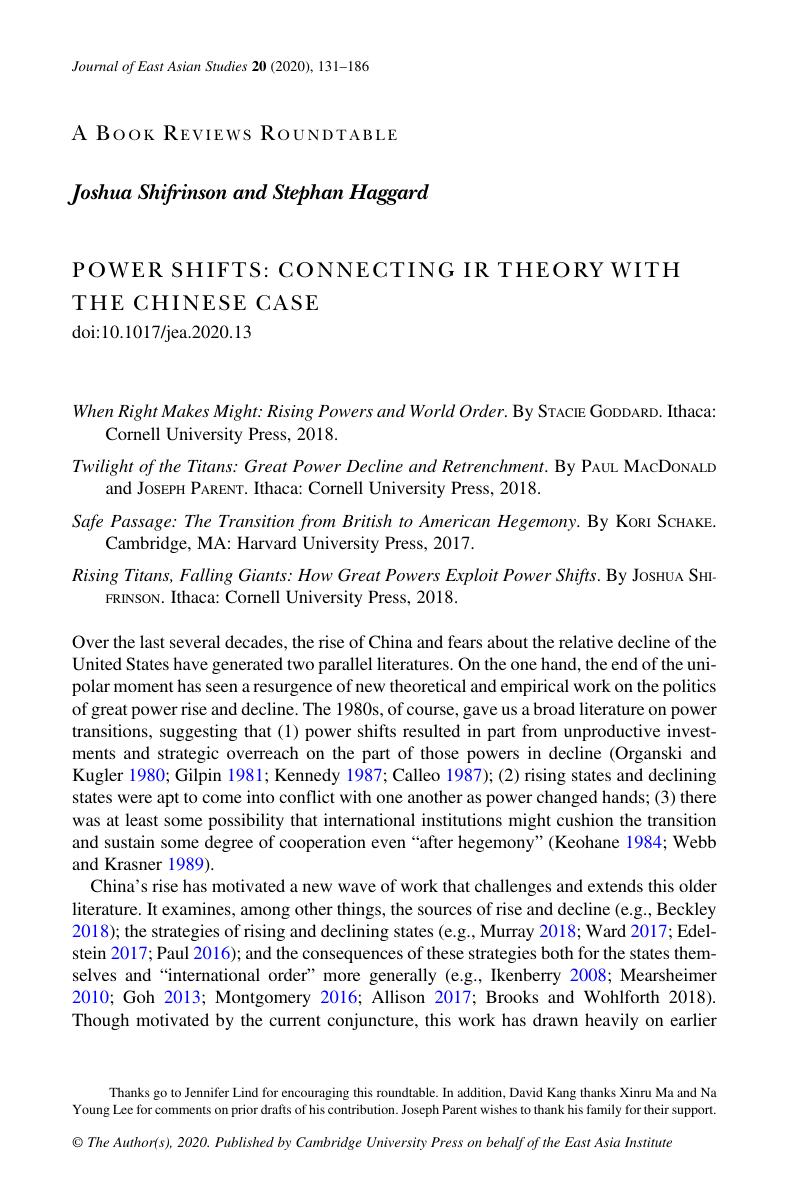Crossref Citations
This article has been cited by the following publications. This list is generated based on data provided by Crossref.
Shifrinson, Joshua
and
Haggard, Stephan
2021.
POWER SHIFTS: CONNECTING IR THEORY WITH THE CHINESE CASE – CORRIGENDUM.
Journal of East Asian Studies,
Vol. 21,
Issue. 2,
p.
365.
Huang, Chin-Hao
2023.
Strong-State Restraint as a Legitimation Strategy: Evidence from the South China Sea.
Foreign Policy Analysis,
Vol. 19,
Issue. 2,




